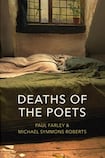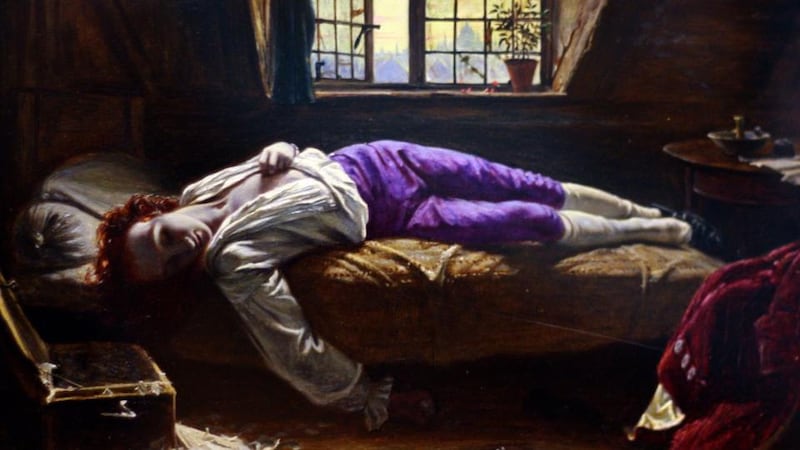
When he was in his mid-50s Philip Larkin had a conversation with his friend and secretary, Betty Mackereth, in which she asked why he woke every morning thinking of death. “My father died when he was 63,” Larkin replied, “and I expect I shall die when I’m 63.” “Yes, you will,” Mackereth said. “Because you are programming yourself to die at 63.”
Larkin’s side of this exchange turned out to have been prescient. He died a few months after his 63rd birthday. But what are we to make of Mackereth’s contention that in leaving the world in this way Larkin was succumbing to a wish, latent or otherwise, to orchestrate his own ending?
This question lies close to the heart of Paul Farley and Michael Symmons Roberts's new book, Deaths of the Poets. Farley and Roberts – both in their 50s, both poets themselves – want to understand what they regard as the pronounced and perhaps unique "association between poets and mortality". Why have so many killed themselves? Why have so many, by leading rackety lives of alcoholism, drug addiction and destructive affairs, lived in such a way as to cultivate and hasten their own demise? Are such antic ways of being the price of great poetry?

Farley and Roberts pursue these questions by making a series of journeys to the places at which about 30 poets lived out their final days, and by digging in archives in search of written, sonic and photographic traces – dinner-party menus, shopping lists, first drafts, discarded verse fragments, final readings, portentous portraits – of lives that were once unhappy works in progress.
They begin, understandably, with Thomas Chatterton, who died alone in a shabby garret at the age of 17 (possibly of a deliberate overdose, possibly by miscalculating quantities of prescribed medication), and whose image as the impoverished and melancholic poète maudit was mythologised by Henry Wallis's oil painting The Death of Chatterton and rapidly adopted, reified and perpetuated by the great Romantics: Keats, Wordsworth, Coleridge.
Farley and Roberts follow William Hazlitt (another great Romantic) in arguing that Chatterton’s work became displaced by the authenticating allure of thwartedness, misery and the most absolute form of oblivion. They go on to suggest that these qualities have since become enshrined as guarantors, even prerequisites, of poetic genius.
One can, in a way, see why. The authors feel they have lived and worked under the shadow of a handful of American poets – Anne Sexton, John Berryman, Sylvia Plath – who killed themselves, and with whom they feel a generational kinship. And there are plenty of other post-Romantic figures to lend weight to the suggestion that those who work in verse are uniquely attracted to fatal self-destruction: we visit the death grounds of Larkin, Dylan Thomas, Thom Gunn, Robert Frost, John Clare, WH Auden.
But such an argument is vulnerable to the example of all those since Chatterton who, without racing determinedly to the grave, have produced work to equal that of any of the cast of Farley and Roberts’s narrative. Larkin gave the examples of Wordsworth and Hardy, remarking that “it’s the big, sane boys who get the medals. The object of writing is to show life as it is, and if you don’t see it like that, you’re in trouble, not life.”
Weakness
But the weakness of Farley and Roberts’s central concern (“that great poems come at a heavy – perhaps ultimately fatal – price”), which is never pursued with any conviction, needn’t have resulted in the frustrating and superficial work they have given us.
Deaths of the Poets
might be a big book, but it is difficult to avoid the conclusion that the only substantial thing about it is its size. Where we ought to be offered a rigorous and sustained engagement with a sombre and demanding subject, we are instead treated to a series of anecdotes and a travelogue in which the authors spend almost no time discussing their subjects’ poetry, indulge in a lot of imagining and speculation (“It’s hard to imagine [Frost] buying popcorn”; “We imagine Ted Hughes fishing in . . . Devon”), write with an almost pathological antitalent for imprecision and cliche (“ripe old age”, “taken some neck”, “rolling with the punches”, “off the beaten track”, “acid wit”) and maintain a tone that veers from frivolous to indecorousness (“There is nothing deader than a dead poet” – try that line out on a member of the recently bereaved) to delighted self-regard at what they consider the winning eccentricity of their project. It is as if the entire enterprise has been conducted in obeisance to the sign in the pub: “You don’t have to be mad to work here . . . But it helps!”
There is a good book to be written about the last days of poets. There is a better one to be written about how extinction features in their work as an impulse to examine, preserve and perhaps despair at the inevitable loss of what Larkin called "the million-petalled flower / Of being here." Deaths of the Poets achieves neither distinction. But in its strongest moments it conveys something of the sadness, and the sense, of our ending.










